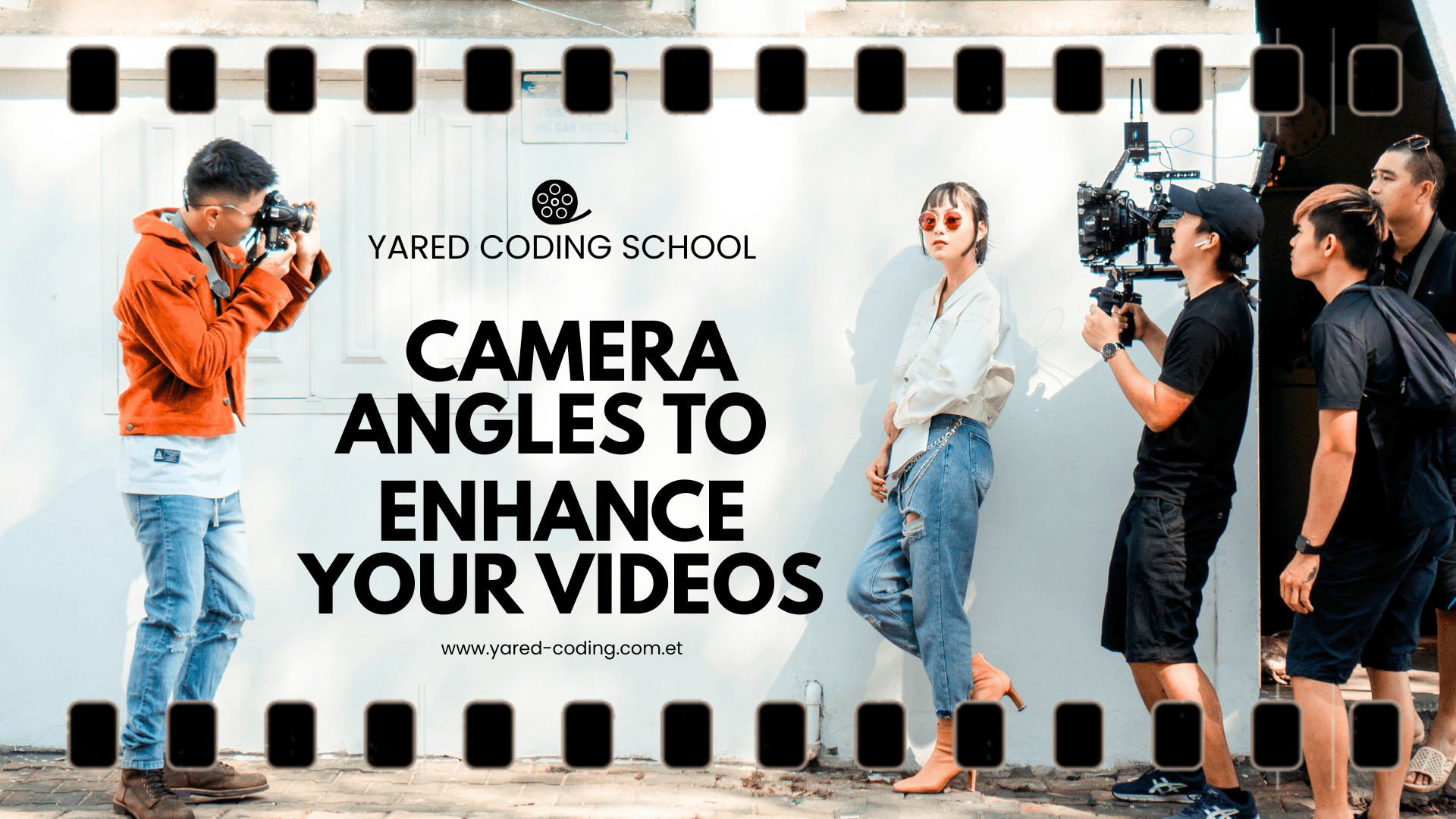12 Essential Camera Angles to Enhance Your Films
A concise guide to the 12 most popular camera angles—what they are, why they matter, when to use them, and key best‑practices to keep your edits seamless and your storytelling powerful.

Introduction
Set the stage by explaining what camera angles are and how they help filmmakers shape perspective, emotion, and the editing process.
Why Camera Angles Matter
Explain the three big “whys” behind choosing your angles: Perspective: Gives the audience multiple viewpoints to connect with the scene. Emotion: Conveys feelings (power, vulnerability, tension, etc.) through visual position. Editing: Provides the editor more options—making cuts smoother and story flow stronger.
The 12 Essential Camera Angles
Define each angle, its typical lens choice, and primary use cases.
1Wide Shot:
Captured with a wider-angle lens, it's used to establish location and show surroundings, helping the viewer understand where the scene takes place. It can also portray emotions like loneliness or insignificance.
- Captures the full environment to establish location.
- Conveys loneliness or insignificance when subjects appear small.
2Long Shot:
Also used to establish location, but with a greater emphasis on the subject filling the entire frame, usually showing their full body. Best created with a tighter focal length and shooting from a distance
- Frames the subject’s full body from a distance.
- Emphasizes subject within context great for action or travel scenes.
3Medium Shot:
Typically framed from the waist up, it helps the viewer focus on what the subject is doing or saying. This shot makes the viewer feel close to the subject, mimicking conversational distance
- Waist‑up framing.
- Mimics conversational distance; ideal for dialogue.
4Cowboy Shot
An in-between shot, framed from the mid-thigh up. Named for its use in Western films, it's ideal when you need to show something around the waist, like a gun
- Mid‑thigh up.
- Popular in western shows both gestures and holstered weapons.
5Tight/Close‑Up Shot
Often just the head and shoulders, used mainly for dialogue or to show detailed expressions. These are for important, intense, or intimate moments to draw the viewer's attention. Best shot on tighter focal lengths (e.g., 50-100mm)
- Head and shoulders.
- Focuses on facial expression and important dialogue.
6Detail or Extreme Close-up Shot:
Used to emphasize a specific detail, creating mystery and depth, and drawing attention to a common theme. Also best with tighter focal lengths or macro lenses
- Zeroes in on one small element (e.g. eyes, hands, objects).
- Builds mystery or highlights critical story clues.
7Low Angle
Makes the subject appear larger than life, portraying power and dominance. It can also convey wonder and majesty if the subject is smaller than its surroundings
- Camera tilted upward.
- Makes subjects feel powerful, dominant, or majestic.
8High Angle:
The opposite of a low angle, it portrays the subject as weak, inferior, smaller, or vulnerable
- Camera tilted downward.
- Renders subjects vulnerable, weak, or overwhelmed.
9Dutch Angle
Involves tilting the horizon of the frame, typically used to convey unease or a feeling that something isn't quite right, like the world is on its side.
- Slightly tilted horizon.
- Conveys unease, tension, or that “something’s off.”
10Over the Shoulder Shot:
When two subjects are talking, the camera is placed behind one's shoulder, putting them in the foreground. This gives the viewer the perspective of being the person being talked to
- Shot behind one character’s shoulder toward another.
- Creates conversational perspective and spatial clarity.
11POV (Point‑of‑View) Shot
Depicts what a character is looking at, allowing the viewer to take on the character's perspective and understand their state of mind. Commonly used in action or sports scenes for thrill, usually shot on a wide-angle lens
- Shows exactly what the character sees.
- Immerses the audience in the character’s experience common in action sequences.
12Cutaway Shot:
An interruption of a scene by inserting a view of something completely different. Great for transitioning to new scenes or showing side stories happening concurrently with the main narrative
- Inserts unrelated or side‑story footage.
- Great for transitions and showing simultaneous action.
Best Practices & Editing Rules
Keep your multi‑angle edits clear and professional:
1180° Rule:
Don’t cross the imaginary line between two characters—keeps spatial relationships consistent.
230° Rule:
When cutting between shots of the same subject, change the camera angle by at least 30° to avoid jarring “jump cuts.”
3Choosing Your Coverage:
For key actions, aim for 5+ angles (e.g. wide, medium, tight, low, high). Always ask: “Does this angle add to the story or just clutter my edit?”